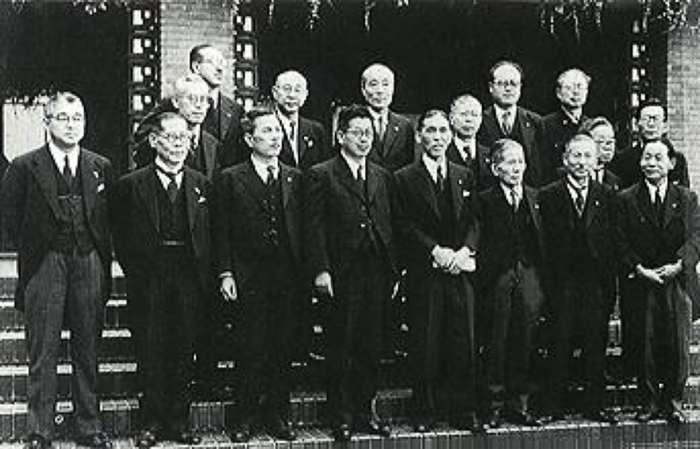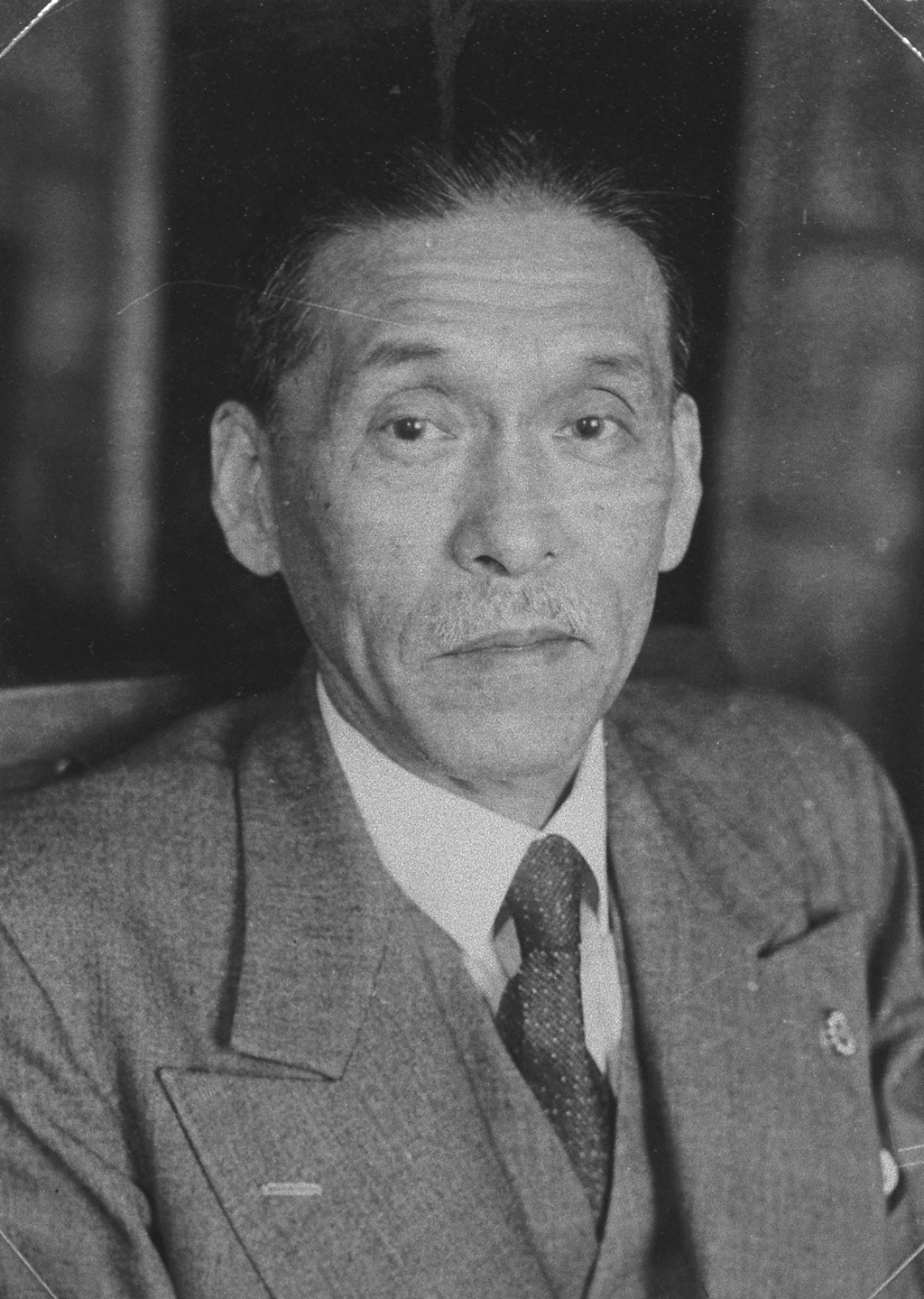|
Katayama Cabinet
The governed Japan under the leadership of Prime Minister Tetsu Katayama from May 1947 to March 1948. It was the first cabinet under the postwar constitution. Cabinet The Japan Socialist Party (''Nihon Shakaitō'', JSP) had emerged as strongest party from both the 23rd lower house election and the 1st upper house election. However, the formation of a coalition proved difficult as any majority coalition would involve at least two of the three largest parties. While the Socialists offered the conservative Japan Liberal Party (''Nihon Jiyūtō'', JLP) of incumbent prime minister Shigeru Yoshida a grand coalition, Yoshida refused active participation in the government. Under the new constitution, the prime minister was no longer selected by the Emperor, but elected by the Diet, "before the conduct of any other business" – and the Socialists pushed for an early vote to prevent the other two major parties from excluding them from a ruling coalition: on May 23, Socialist Tetsu ... [...More Info...] [...Related Items...] OR: [Wikipedia] [Google] [Baidu] |
First Yoshida Cabinet
The First Yoshida Cabinet was the 45th Cabinet of Japan led by Shigeru Yoshida from May 22, 1946 to May 24, 1947. Cabinet Reshuffled Cabinet A Cabinet reshuffle took place on January 31, 1947. References {{Cabinets of Japan Cabinet of Japan 1946 establishments in Japan Cabinets established in 1946 Cabinets disestablished in 1947 1947 disestablishments in Japan ... [...More Info...] [...Related Items...] OR: [Wikipedia] [Google] [Baidu] |
Ashida Cabinet
The Ashida Cabinet is the 47th Cabinet of Japan headed by Hitoshi Ashida from March 10, 1948 to October 15, 1948. Cabinet References {{Cabinets of Japan Cabinet of Japan 1948 establishments in Japan Cabinets established in 1948 Cabinets disestablished in 1948 1948 disestablishments in Japan ... [...More Info...] [...Related Items...] OR: [Wikipedia] [Google] [Baidu] |
Takeo Kurusu
Takeo may refer to: * Takéo Province, a province of Cambodia **Doun Kaev (town), formerly known as Takéo, the capital of Takéo province *Ta Keo, an Angkorian temple in Cambodia *Takeo, Saga, a city in Saga Prefecture, Japan * Takeo (given name), a masculine Japanese given name **Takeo Doi, a Japanese aircraft designer **Takeo Fukuda, a Japanese politician **Takeo Hatanaka, a Japanese radio astronomer **Takeo Kurusu, a Japanese politician **Takeo Miki, a Japanese politician **Takeo Spikes, a former American football player **Takeo Takahashi, a Japanese former football player **Takeo Takahashi is a Japanese animator, animation director, and storyboard artist. Filmography Director Television series OVAs Films Other Television series OVAs/ONAs Films Adult Anime Notes References External links *Takeo Takahashi animeat ..., a Japanese animator ** Takeo Yoshikawa, a Japanese spy {{disambiguation ... [...More Info...] [...Related Items...] OR: [Wikipedia] [Google] [Baidu] |
Minister Of Finance (Japan)
The is a member of the Cabinet of Japan and is the leader and chief executive of the Ministry of Finance. The minister is also a statutory member of the National Security Council, and is nominated by the Prime Minister of Japan and is appointed by the Emperor of Japan The Emperor of Japan is the monarch and the head of the Imperial House of Japan, Imperial Family of Japan. Under the Constitution of Japan, he is defined as the symbol of the Japanese state and the unity of the Japanese people, and his positio .... The current minister is Shunichi Suzuki, who took office on 4 October 2021. List of ministers Prewar (1900–1946) Postwar (1946–present) References {{Ministries_of Japan ... [...More Info...] [...Related Items...] OR: [Wikipedia] [Google] [Baidu] |
Kozaemon Kimura
Kozaemon Kimura (木村小左衛門; 1888–1952) was a Japanese businessman and politician who held several cabinet posts. He was one of the long-term members of the House of Representatives. He joined several political parties, including the Democratic Party. Biography Kimura was born in the Shimane Prefecture in 1888. He was a graduate of Waseda University. Following graduation he worked at different banks and headed various companies. He served as a secretary to the prime minister, minister of finance and minister of home and also, a parliament counselor. As of 1946 Kimura was the vice speaker of the House of Representatives to which he was first elected in 1924. In 1947 he was appointed minister of agriculture to the cabinet led by Prime Minister Shigeru Yoshida and in June 1947 he was named minister of home affairs to the cabinet led by Prime Minister Tetsu Katayama. In 1949 he was again elected to the House of Representatives and was appointed state minister to the cabinet ... [...More Info...] [...Related Items...] OR: [Wikipedia] [Google] [Baidu] |
Ministry Of Home Affairs (Japan)
was a ministry in the Japanese government that existed from July 1, 1960, to January 5, 2001, and is now part of the Ministry of Internal Affairs and Communications. The head of the ministry was a member of the Cabinet of Japan. References External links * * * {{Authority control Home Affairs Politics of Post-war Japan Japan Japan ( ja, 日本, or , and formally , ''Nihonkoku'') is an island country in East Asia. It is situated in the northwest Pacific Ocean, and is bordered on the west by the Sea of Japan, while extending from the Sea of Okhotsk in the north ... 1960 establishments in Japan ... [...More Info...] [...Related Items...] OR: [Wikipedia] [Google] [Baidu] |
Minister For Foreign Affairs (Japan)
The is a member of the cabinet of Japan and is the leader and chief executive of the Ministry of Foreign Affairs. The minister is responsible for implementing Japan’s foreign policy and is also a statutory member of the National Security Council. The minister is nominated by the Prime Minister of Japan and is appointed by the Emperor of Japan. Since the end of the allied occupation of Japan, the position has been one of the most powerful in the cabinet, as Japan's economic interests have long relied on foreign relations. The recent efforts of former Prime Minister Junichiro Koizumi and Shinzo Abe to establish a more interventionist foreign policy have also heightened the importance of the position. The current Minister for Foreign Affairs is Yoshimasa Hayashi, who took office on November 10, 2021. List of Ministers for Foreign Affairs *''Italics'' indicates subject served as Acting Foreign Minister. *Bold indicates subject served concurrently as Prime Minister for a period ... [...More Info...] [...Related Items...] OR: [Wikipedia] [Google] [Baidu] |
Deputy Prime Minister Of Japan
The is the second highest-ranking officer of the executive branch of the government of Japan after the prime minister of Japan, and ranks first in the line of succession to the prime minister. The office of the deputy prime minister is not a permanent position, and exists only at the discretion of the prime minister. The deputy prime minister is appointed by the prime minister and must be a member of the cabinet, for instance Taro Aso served as Minister of Finance concurrently. Unlike the vice president of the United States, the deputy prime minister does not automatically become the prime minister, should the latter be incapacitated or resign, but instead exercises the duties of the prime minister until the National Diet elects a successor. However, when Prime Minister Tanzan Ishibashi resigned in 1957, then Minister for Foreign Affairs and Deputy Prime Minister Nobusuke Kishi (grandfather of Shinzo Abe and Nobuo Kishi) took the office of acting prime minister, and was officially ... [...More Info...] [...Related Items...] OR: [Wikipedia] [Google] [Baidu] |
Ryokufūkai (1947–60)
Ryokufūkai may refer to: *Ryokufūkai (1947–60) Ryokufūkai may refer to: * Ryokufūkai (1947–60), a defunct political party in Japan * Ryokufūkai (1964–65), a defunct political party in Japan {{disambiguation ..., a defunct political party in Japan * Ryokufūkai (1964–65), a defunct political party in Japan {{disambiguation ... [...More Info...] [...Related Items...] OR: [Wikipedia] [Google] [Baidu] |
Shigeru Yoshida
(22 September 1878 – 20 October 1967) was a Japanese diplomat and politician who served as prime minister of Japan from 1946 to 1947 and from 1948 to 1954. Yoshida was one of the longest-serving Japanese prime ministers, and is the third-longest serving prime minister of post-occupation Japan. Early life and education Yoshida was born on 22 September 1878, in Kanda-Surugadai, Tokyo, the fifth son of political activist and former samurai Tsuna Takeuchi. Tsuna was a devout supporter of Itagaki Taisuke and would later serve in the first National Diet in 1890. Yoshida's biological mother's identity is not known. Shortly before his birth, his biological father was arrested for anti-government conspiracy, and his mother gave birth to him at the house of Kenzō Yoshida, a friend of his father. As young samurai, Tsuna and Kenzō had made a name amidst the decades of unrest around the time of Meiji Restoration. In August 1881, Yoshida was adopted by Kenzō Yoshida and his wife Kotoko ... [...More Info...] [...Related Items...] OR: [Wikipedia] [Google] [Baidu] |
Japan Liberal Party (1948) , formed in 2012 as the People's Life Party
{{Dab, political ...
Liberal Party (Japan) may refer to: * Liberal Party (Japan, 1881), formed by Itagaki Taisuke to promote a national assembly *Liberal Party (Japan, 1890), a merger including the Aikoku Kōtō, Daidō Club and Daidō Kyōwakai * Liberal Party (Japan, 1903), a breakaway from Rikken Seiyūkai by some National Diet members *Liberal Party (Japan, 1945), a conservative party led by Ichirō Hatoyama *Liberal Party (Japan, 1950), a merger including the Democratic Liberal Party *Liberal Party–Hatoyama (1953), led by Mamoru Shigemitsu *Liberal Party (Japan, 1998), formed by Ichirō Ozawa and Hirohisa Fujii *Liberal Party (Japan, 2016) The was a political party in Japan that merged with the Democratic Party for the People on 26 April 2019. It had 2 out of the 475 seats in the House of Representatives, and 3 in the 242-member House of Councillors prior to merging. Formed as the ... [...More Info...] [...Related Items...] OR: [Wikipedia] [Google] [Baidu] |
Constitution Of Japan
The Constitution of Japan (Shinjitai: , Kyūjitai: , Hepburn: ) is the constitution of Japan and the supreme law in the state. Written primarily by American civilian officials working under the Allied occupation of Japan, the constitution replaced the Meiji Constitution of 1890 when it came into effect on 3 May 1947. The constitution provides for a parliamentary system of government and guarantees certain fundamental rights. In contrast to the Meiji Constitution, which invested the Emperor of Japan with supreme political power, under the new charter the Emperor was reduced to "the symbol of the State and of the unity of the people" and exercises only a ceremonial role acting under the sovereignty of the people. The constitution, also known as the MacArthur Constitution, , or the , was drafted under the supervision of Douglas MacArthur, the Supreme Commander for the Allied Powers, during the Allied occupation of Japan after World War II. Japanese scholars reviewed and modi ... [...More Info...] [...Related Items...] OR: [Wikipedia] [Google] [Baidu] |







